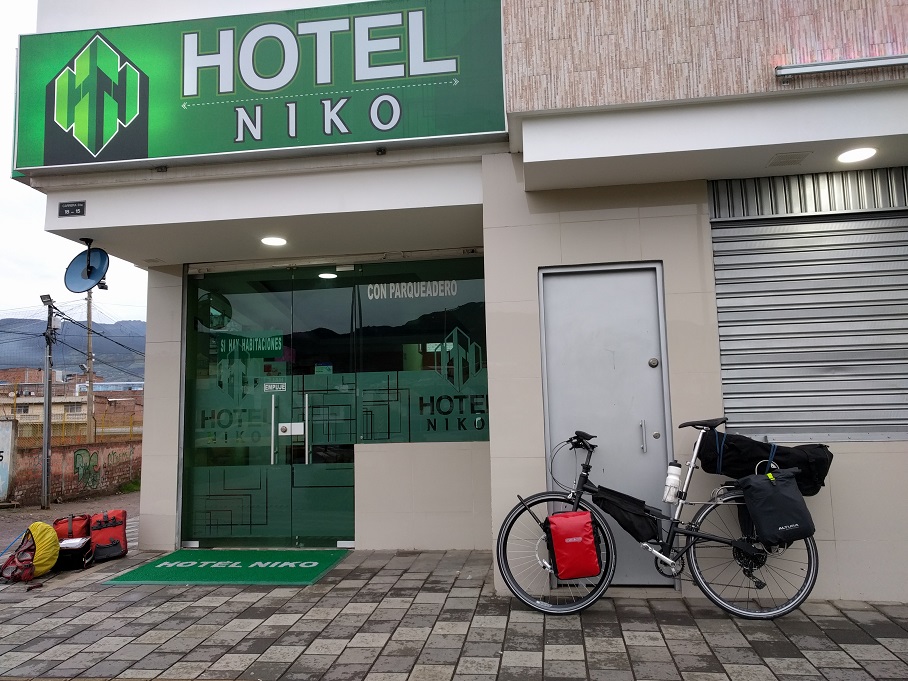Alpaca Expedition Bike
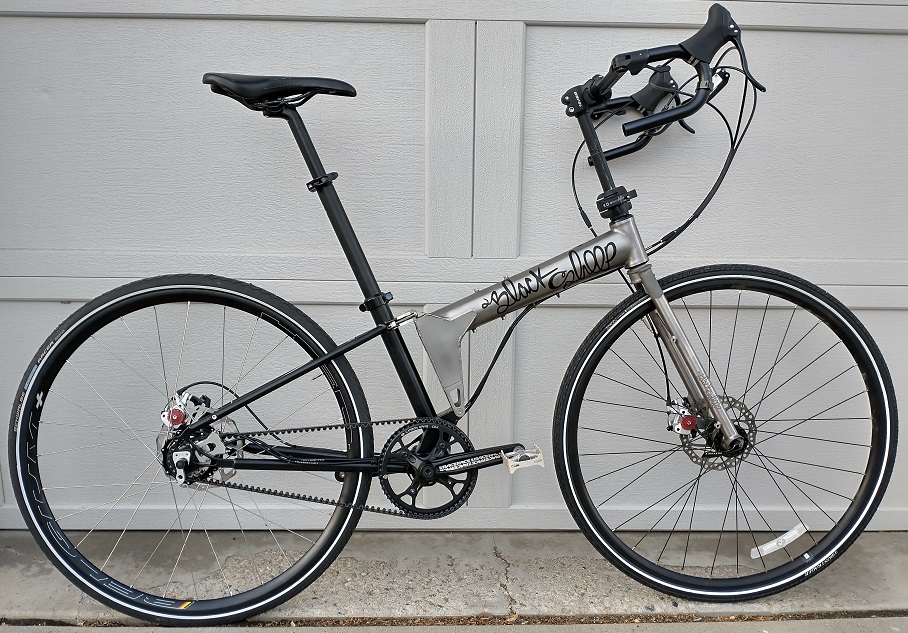
The Expedition Bike has a titanium front frame section, a chrome moly steel rear frame section, and the latest version of our patented hinge/clamp system. The configuration shown has a Kindernay hub, Gates belt drive, disk brakes, and folding Morf-Tech handlebars. The gear range is 543%. This gives an optimized range of 20-110 gear inches for touring. This frame can accomodate front and rear racks for touring.
Alpaca Production Bike
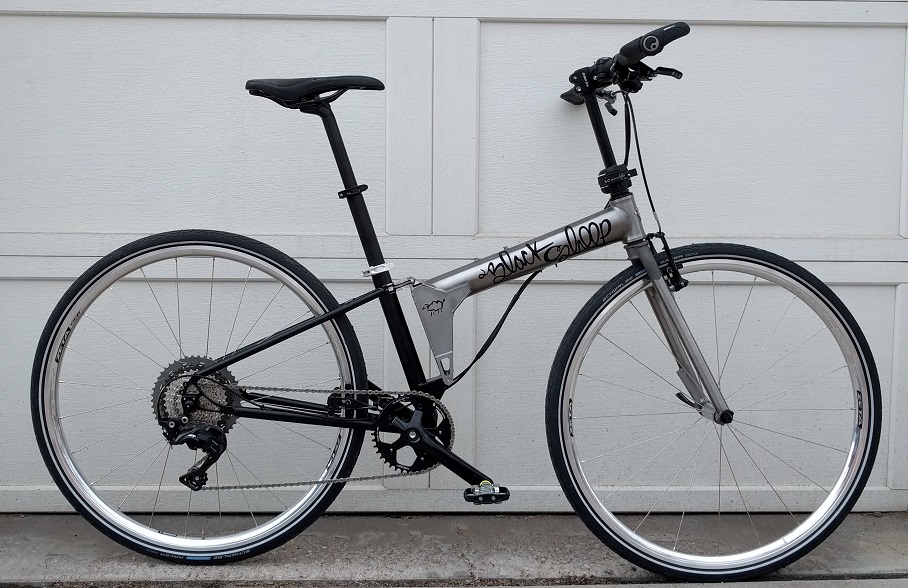
The Production Bike is the same as the Expedition Bike, but has a frame designed for a chain drive. The configuration shown has a Shimano 1x chain drive that gives a 418% gear range. The version shown has folding Ergotec handlebars and Shimano v-brakes.
Alpaca Pinion Bike
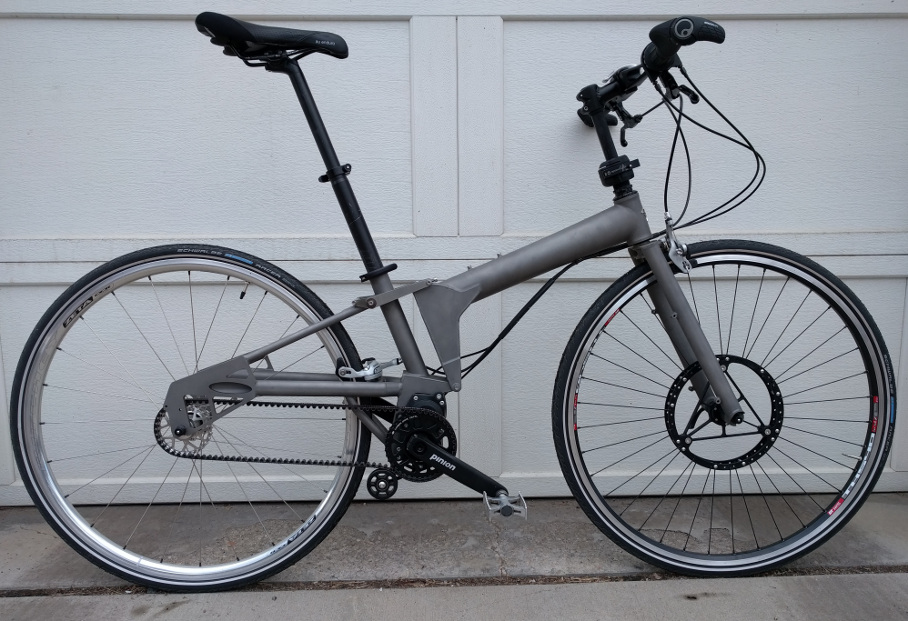
The Pinion Bike has a unique bridge that combines a folding mechanism with the mounting locations for a Pinion gearbox - resulting in a Gates belt drive bike with a gear range of up to 636%. The frame and bike can otherwise be configured similarly to the Expedition Bike or the Production Bike. This photo also shows the patented Travel Bike Wheel (front wheel) that facilitates the packing of a full-size bike as standard checked airline luggage. This bike won "Best Experimental Bike" award at the 2019 North American Handmade Bike Show.
Folding and Packing
Most US airlines, and many other airlines, specify that luggage must be less than 62 inches (1575 mm) when the width + height + depth of the suitcase are added together. Therefore, cases sold by companies such as S&S Machine, are made to a 26 inch x 26 inch x 10 inch inch size. The Alpaca bikes shown above are easily packed into such cases as illustrated below.
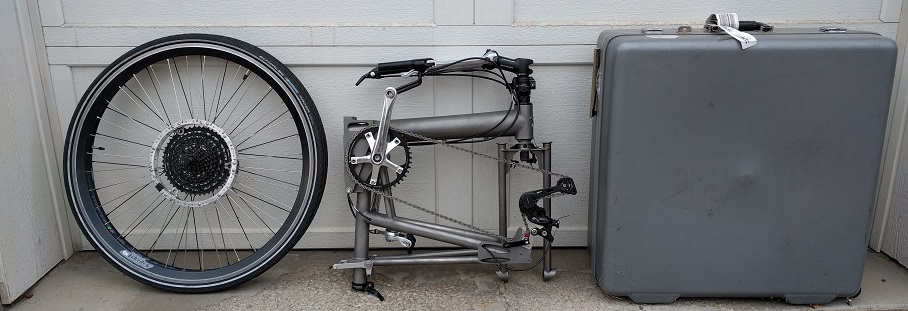
The photo above shows a sample of our wheels (left), folded frame (middle), and a standard 26x26x10 inch S&S Hard Case. This illustrates how our patented full size travel bike wheels and full size folding bicycle frame can be made compact enough to fit inside the 26 inch width and 26 inch height of the case.
The photo below shows the bike frame packed into the base and the wheels packed into the lid of the 26x26x10 inch case. Note that the center of our patented travel bike wheel (front wheel) is removable. We use rear wheels with removable centers (either the axle or the entire rear hub is removed depending upon the bike configuation) so that a pair of wheels has a sufficiently low stack height to fit into the lid of the case.
When using 700C wheels, the air must be let out of the tires for the wheels to fit in the 25.6 x 25.6 inch lid interior. If you'd like to pack your bike into an airline case without needing to let the air out of the tires, we can configure the frame to use 650B tires or 26-inch mountain bike tires.
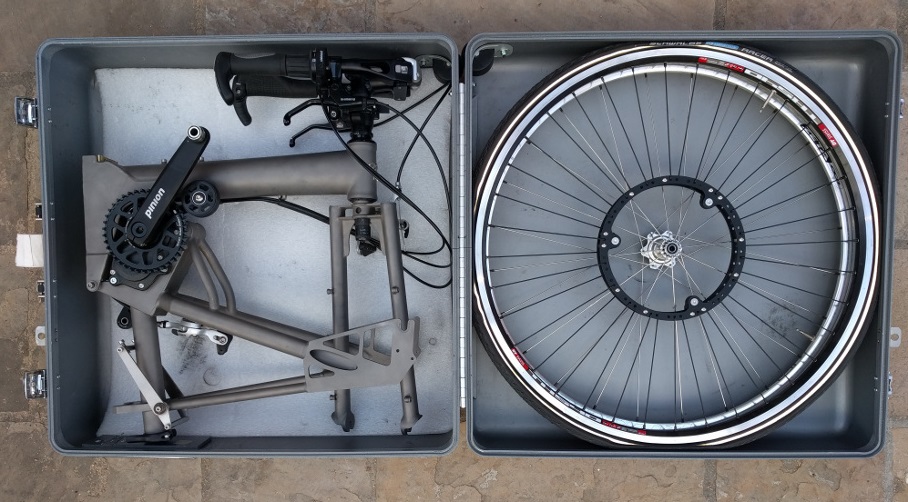
For fast and compact packing and unpacking, the handlebars fold, the steerer tube extender slides through the head tube, and the fork is rotated 90 degrees relative to the handlebars. The bikes shown use the MKS EZY or EZY Superior pedals that can be installed and removed without tools. There is plenty of room for other parts in the case.
Alpaca bikes can also be packed into similar-sized collapsible cases such as the S&S Backpack Travel Case, as shown below.
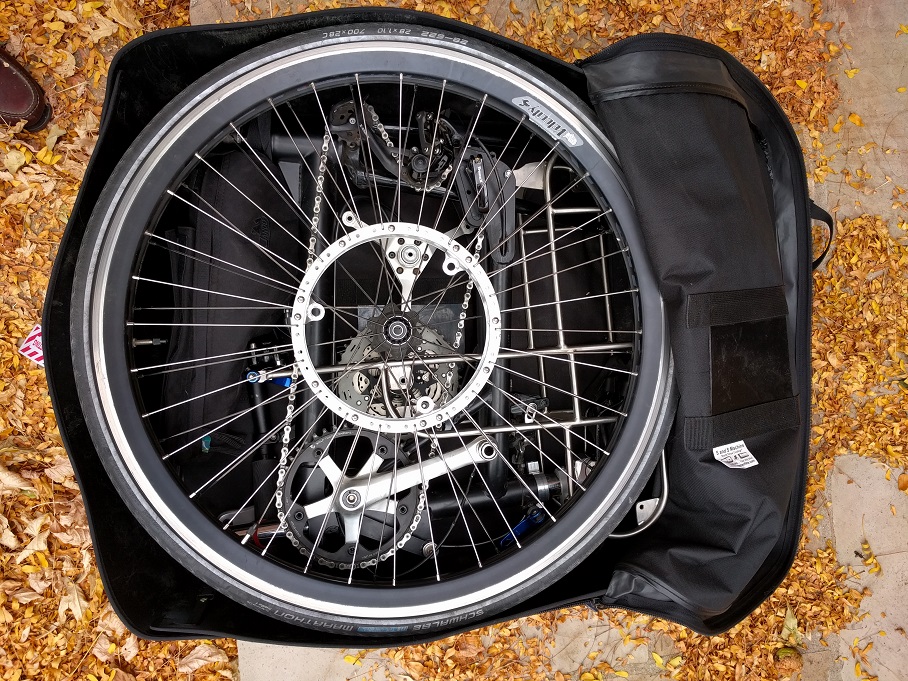
A collapsible case makes it easier to ride on the bike with the case from one location to another. The photo below shows the inventor (Bert Vermeulen) arriving at Denver International Airport with his Alpaca Bike, collapsible case, and other things needed for a trip.
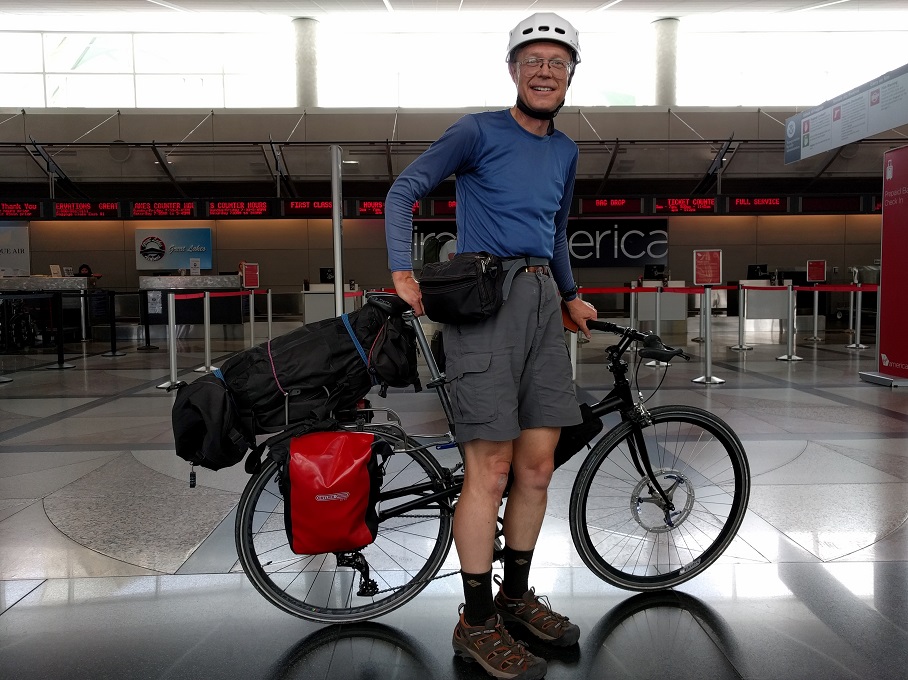
The photo at the left below shows the bike in the case on Bert Vermeulen's back, ready to check in for his flight. For those who prefer to wheel their bike case, the photo on the right below shows the use of a folding luggage cart with the S&S Backpack Travel Case.
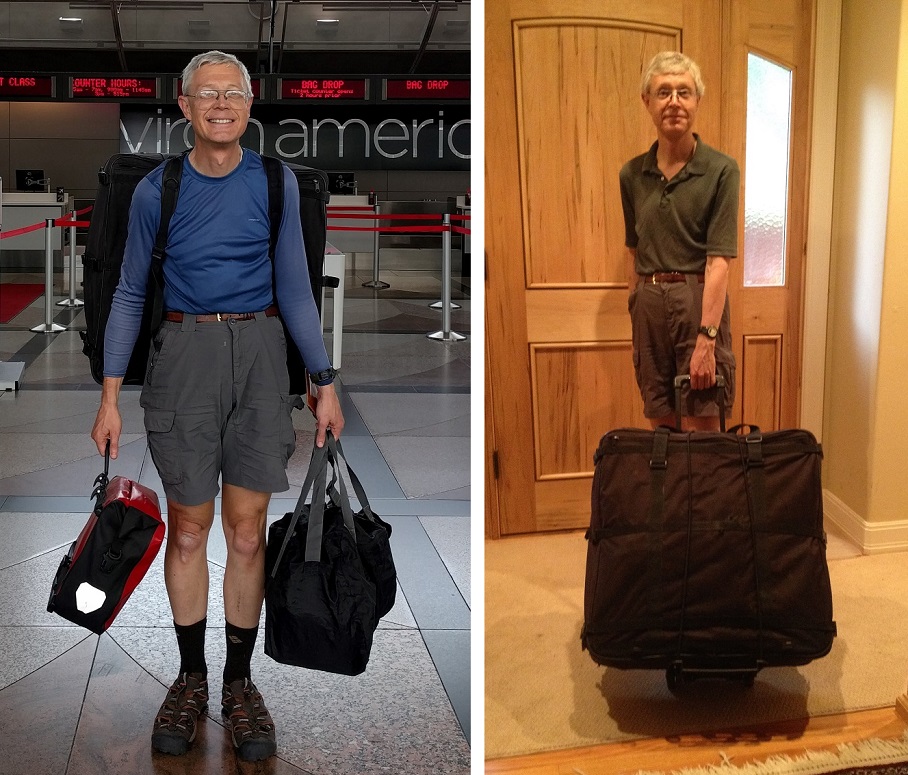
Email bert @ farfold.com if you would like a copy of a brochure that further explains the folding and packing of the Alpaca Bikes or have any other questions about these folding bicycles.
Alpaca Bikes in Use
Below is the Expedition Bike on a winter bike ride near Longmont, Colorado. This bike is configured for front and rear racks in order to hold panniers and go anywhere.
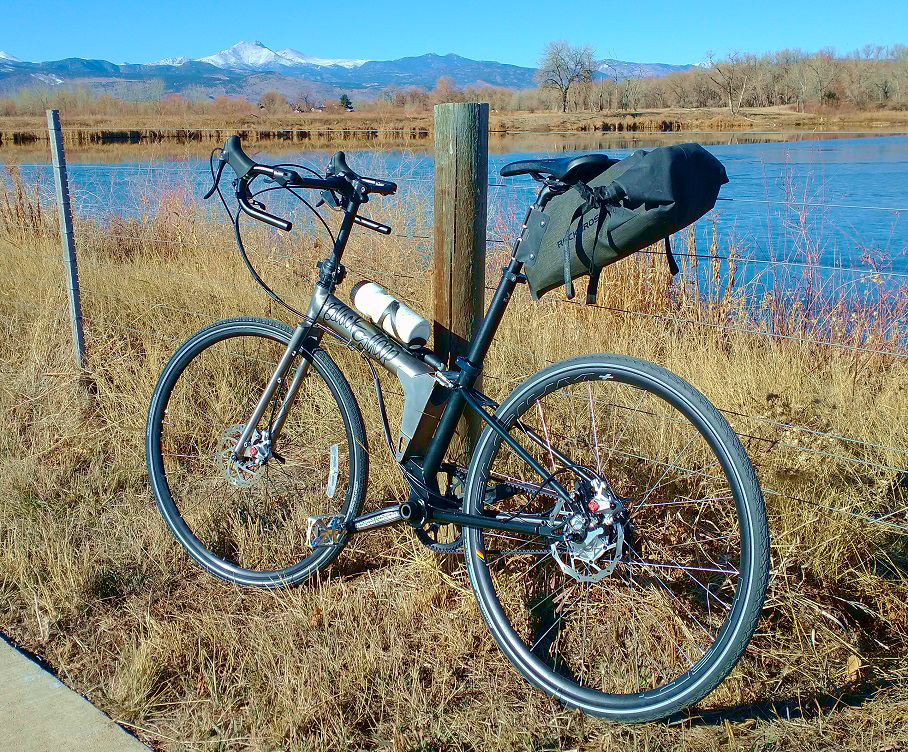
Below is the Production Bike out for a spin with the inventor (Bert Vermeulen). This shows how this full size folding bike fits a 6-foot rider.

Below is the Pinion Bike in Hawaii. This bike has been on more than 5 round trips on various airlines and has been ridden by riders of a variety of sizes, all of whom found it to be a higly enjoyable ride. It is worth noting the custom rack that is available for this bike. The rack folds around the frame when the bike is packed.
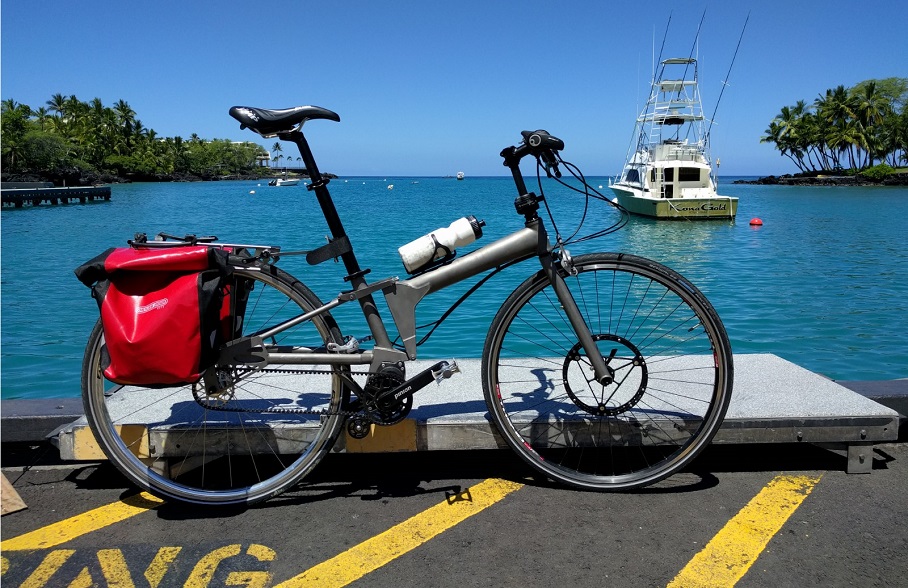
Below is the same Pinion Bike at the airport in Kona, Hawaii. The bike and all accessories (including one of the red panniers) fit into the collapsible bike case. The other red pannier fits under an airline seat. The backpack shown at the right front goes into the overhead bin.
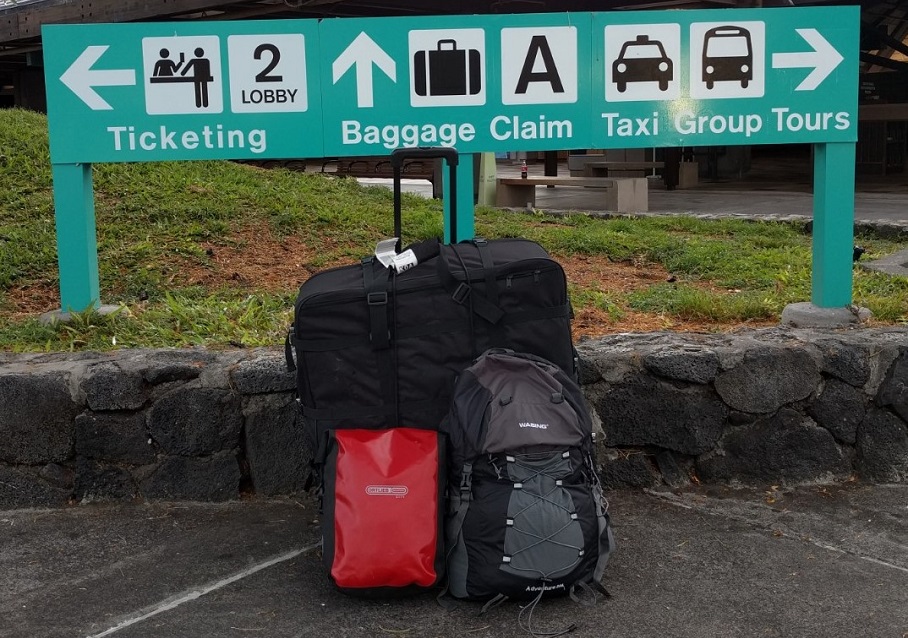
The above bike was also used in an unsupported bike trip from Georgetown, Guyana, to Paramaribo, Surinam, that is described in this blog on Crazy Guy on a Bike.
Below is the fully loaded second generation prototype Alpaca bike near the airport in Zurich, Switzerland, in the summer of 2018. That trip started with a flight from Denver to Amsterdam, followed by rides criss-crossing the Netherlands, a train ride to Friedrichshaven, Germany, to show the bike at EuroBike, a bike ride to Zurich, and flight back to Denver. The collapsible bike case is on the top of the rear rack and all of the other gear is in the front and rear panniers.
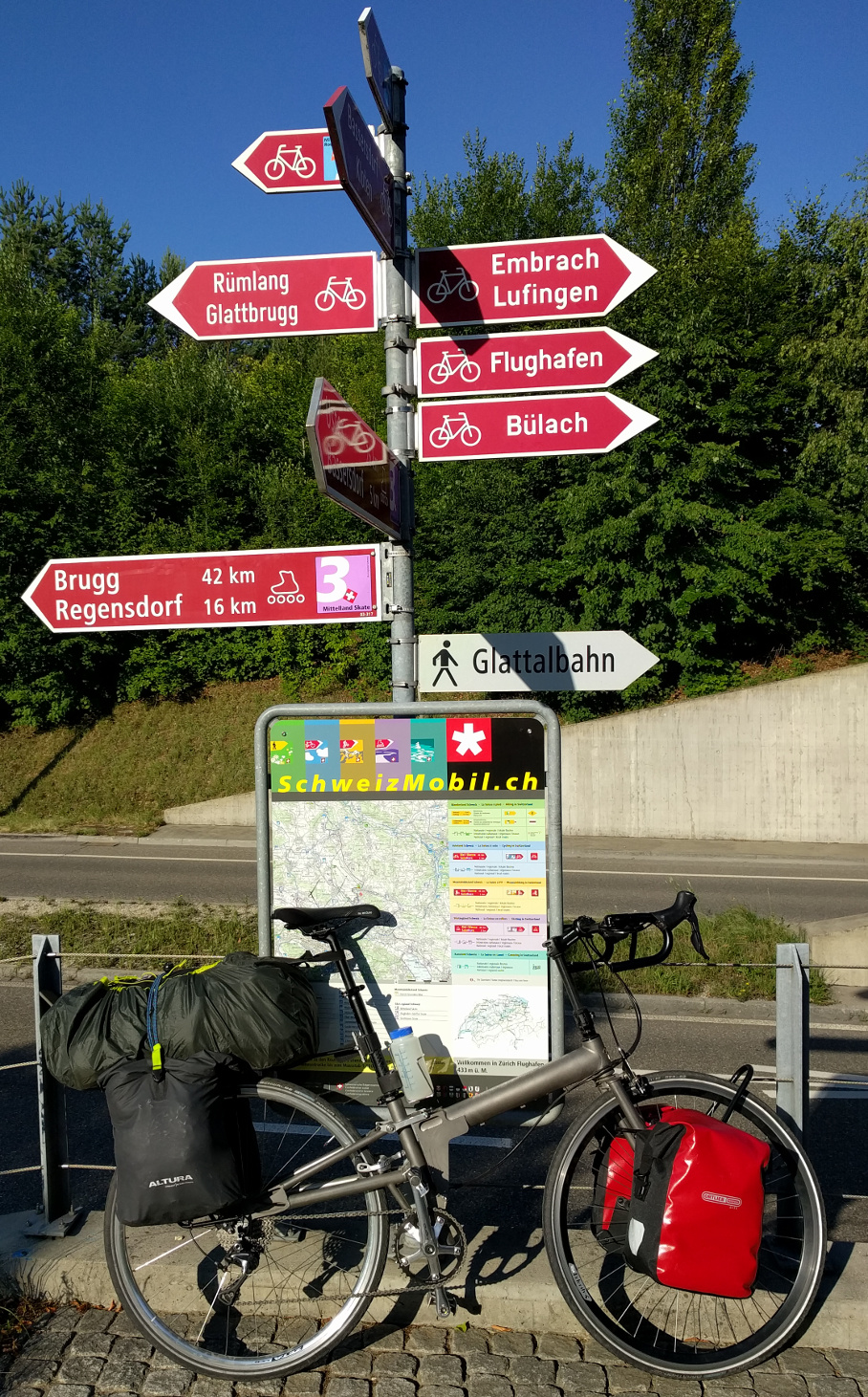
Below is the fully loaded first generation prototype Alpaca bike in Pasto, Columbia, which is close to the border with Ecuador. This photo was taken in May 2017. All gear for the 2-week trip and the bike case are loaded on the bike. The trip started with a flight to Bogota, Columbia, and ended with a flight from Quito, Ecuador. This first generation prototype was ridden more than 4,000 miles on 3 continents (North America, South America, and Europe) and taken on more than 10 flights in 2016 and 2017. This confirmed the viability and benefits of this bike design and contributed to the improvements seen in the current Alpaca bikes.
